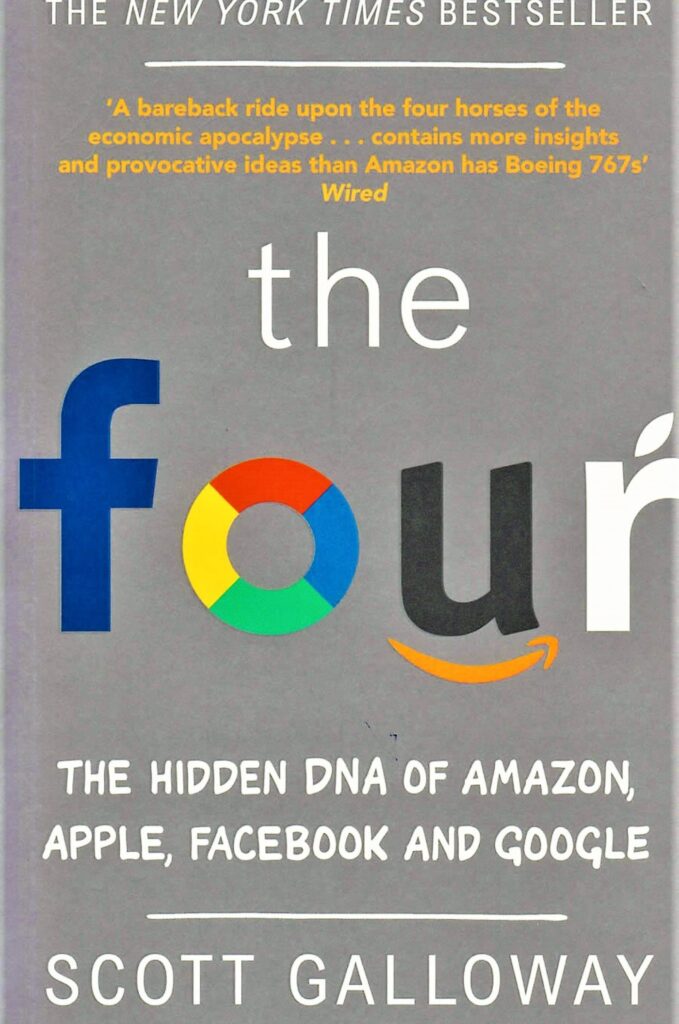“I hope the reader gains insight and a competitive edge in an economy where it’s never been easier to be a billionaire, but it’s never been harder to be a billionaire.” This is a statement by the author in chapter one when he introduces the Four. The books talks through four dominant companies recognized globally: Amazon, Apple, Facebook and Google. Amazon champions in the retail and delivery industry. Apple reports the highest profit margins in the tech industry. Facebook (together with its affiliates) has over 2 billion users and Google practically owns the search market. Each of these companies have a unique input in the sectors they represent and their success is phenomenal to both their competitors and the overall market.
The author elaborates on their respective niches: the Apple logo, for instance, graces the most coveted laptops and mobile devices. It is a badge of wealth, education and Western values. Amazon has completely revolutionized the retail industry. It has eased the shopping experience by just a click. With Facebook, there are about 7.5 billion people in the world and 1.5 billion of them have a daily engagement with Facebook: Facebook itself, Instagram and Whatsapp. Now imagine its influence in marketing of products and services through intriguing pictures and updates from its users. Google, the source of knowledge, practically ages in reverse; it becomes more valuable with use, harnessing the power of 2 billion people, 24 hours a day, connected by their intention (what you want to know) and their decisions (what you choose), yielding infinite results.
Evidently, billions of people have derived significant value from these firms and their products. However, the author proceeds to portray the harm that these companies do to the society. Not so long ago, Facebook has had scandals regarding how it uses customer data. Google has been spying on its users and created profiles that it sells to its advertisers. Through the years, these companies have accumulated immense power so much so that they even avoid paying their required tax. They have exploited the basest instincts for growth and profitability as they have designed impenetrable infrastructure to blunt attacks from potential competitors (Chapter 6).
The book of course is not an indictment of the Four. Rather, it seeks to engage readers to reason whether the companies have been a factor in the slow and steady deaths of many emerging and existing firms. Moreover, readers are made to reason if the social impact of these companies is really healthy or not.
With about 300 pages worth of insight, a reader could cover the book in two weeks or less. I’d recommend it for leisure study as well since it doesn’t have substantial numerical content. See the scale below!



